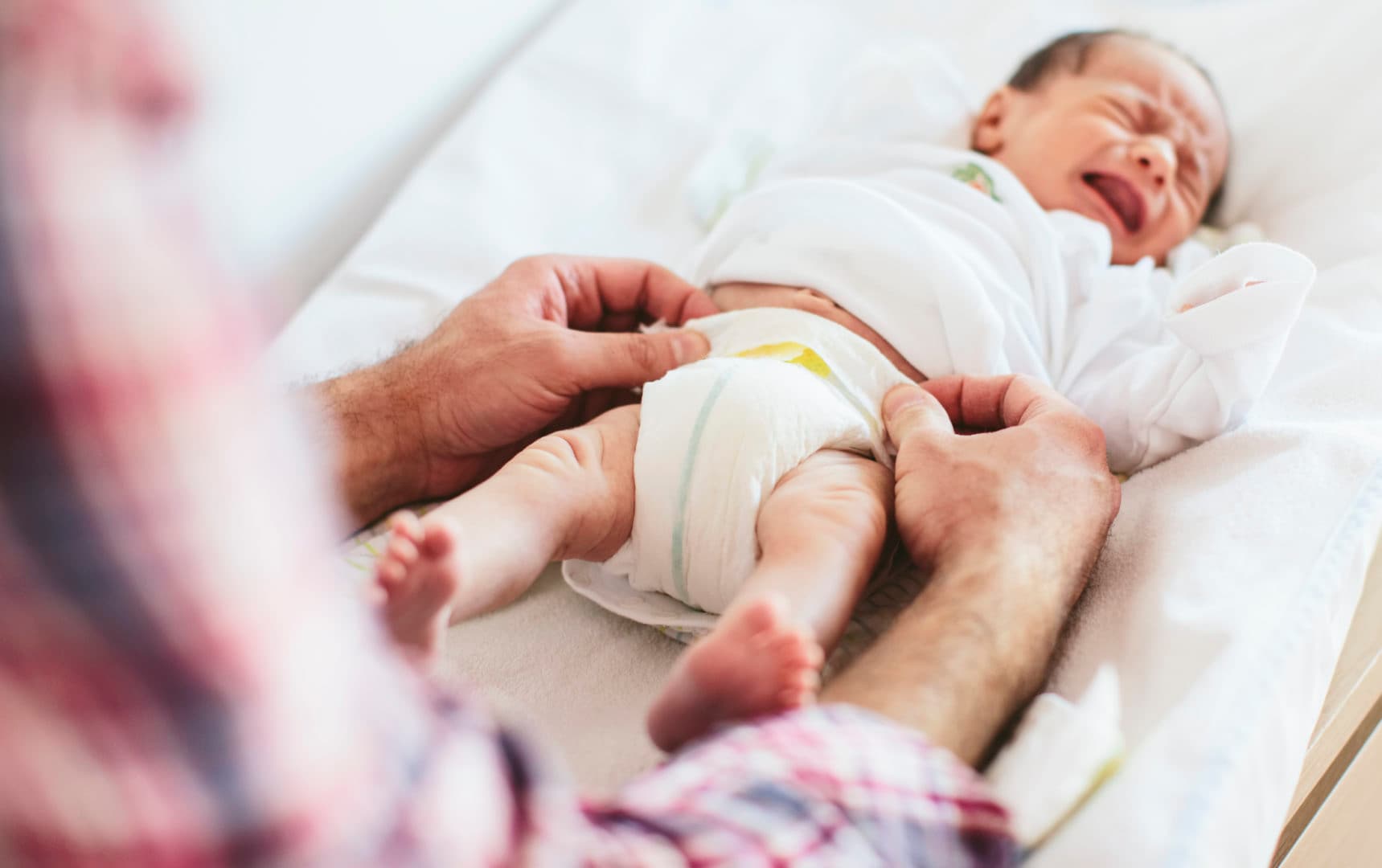Red, inflamed, irritated skin in the diaper area: oh no!
Diaper rash is a common problem for infants and toddlers, and can be very worrying and frustrating to parents. And when the wee one is screaming in pain with every diaper change, parents are desperate for a cure – and fast. After a quick lesson on the cause of diaper rash, treating and preventing this frustrating condition is no sweat!
Most diaper rash starts as an irritant dermatitis: the skin that is exposed to urine and stool gets irritated and raw. (“Dermatitis” means inflammation of the skin.)
The first step to treatment and prevention of diaper rash, then, is to use an ointment that acts as a barrier between the irritated skin and the baby’s urine and stool. Most diaper ointments contain one of two main ingredients: zinc oxide (thick and opaque white) or petroleum jelly. To this a host of vitamins and other ingredients are added: fancier ingredients and packaging = more expensive products. But in the end, a simple paste with either zinc oxide or petroleum jelly generally works well. Since diaper cream is meant to be a barrier, a generous application is usually more effective than a thin coat. More is, in this case, better.
Most minor diaper rashes respond well to treatment with a barrier ointment. And gentle skin care can help. Frequent diaper changes keep the irritants off the skin. Bathing your baby frequently in gentle warm water baths (even 2-3 times a day for the worst diaper rashes) also helps to reduce the inflammation. Keeping the diaper off and airing the skin out several times a day can be helpful too, though you have to watch for unwanted sprinkles and explosions with this approach!
What if the rash is not resolving in spite of gobs of diaper cream and good skin care? A simple irritant diaper rash can be exacerbated by several interlopers.
Yeast like Candida albicans (which lives on our skin and is usually harmless) gravitates to the warm, moist diaper area. Overgrowth of yeast can worsen diaper rash and prevent healing. A yeasty diaper dermatitis is often very beefy red and may have small red bumps or pimples at the edges of the central red area. Applying an over-the counter antifungal medicine like clotrimazole or miconazole two or three times a day can clear this condition rapidly. These ointments are available in the pharmacy for treatment of women’s vaginal yeast infections or for athlete’s foot.
Sometimes the bacteria that normally live on our skin can complicate the rash, causing small pustules (red bumps with a white or yellow head of pus in the center) or blisters. In this case you may need to add an antibacterial ointment. Start with an over-the-counter double or triple antibiotic and talk to your pediatrician if the rash is spreading or not resolving.
You may also add to the mix some hydrocortisone (0.5% or 1%) which can decrease the inflammation associated with severe diaper rash.
With vigilant care and a few tricks up your sleeve, you are now prepared to attack one of the scourges of infant life.
1. As soon as your baby’s bottom begins to get even a little red, start using a barrier ointment: this can prevent worsening of the rash.
2. You cannot “overdose” your baby on diaper ointment. Go ahead, slather on a thick coat!
3. When babies get sick or have diarrhea, the stool becomes more acidic and can rapidly create diaper rash: it’s like a chemical burn. Frequent diaper changes and lots of diaper cream during these times can prevent a bad rash.
4. Warm water baths do wonders for inflamed skin, especially diaper rash.
5. In the case of severe or persistent rashes, you can make a paste by mixing an over-the counter antifungal medicine like clotrimazole or miconazole with an antibiotic ointment and hydrocortisone: apply the magic mix several times daily and watch the rash disappear.
6. See your pediatrician or healthcare provider if the rash has significant blistering, skin peeling, or pus bumps (pustules); if it persists despite home therapy; if the rash spreads rapidly; or if your baby develops a fever or appears ill.






